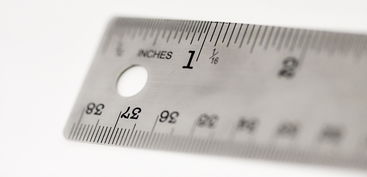Roulette, a game as captivating as it is enigmatic, has long held a special place in the hearts of gamblers and non-gamblers alike. Known for its simple rules yet complex strategies, roulette's allure lies not just in the thrill of the wheel spinning, but in the vibrant spectrum of colors that adorn it. While traditionally associated with red and black, the roulette wheel in some innovative setups showcases an even richer palette, expanding our perception beyond the binary hues. Let's delve into this colorful universe and explore the seventeen distinct colors that could theoretically transform a standard roulette experience into a feast for the eyes.
In traditional roulette, the wheel is segmented into 37 pockets (European) or 38 pockets (American), each painted either red or black. These two colors create the classic, iconic aesthetic synonymous with roulette, and they serve as identifiers for betting purposes. However, imagine if the roulette wheel could be enhanced with more colors, adding another layer of excitement and strategy to the game. Below is a speculative exploration of how such an array might look, keeping in mind that this is purely theoretical given the conventional norms and design limitations of the physical roulette wheel.
The Color Palette of Innovation:
1、Red (Màu Đỏ) - Traditionally marking odd numbers, this intense hue remains the cornerstone of roulette’s visual charm.
2、Black (Đen) - Typically designating even numbers, the contrasting black complements red beautifully.
3、Green (Xanh Lá Cây) - Often seen on the zero (and double zero in American roulette), it breaks the binary cycle, creating an intriguing outlier.
4、Blue (Xanh Dương) - An addition to the wheel might denote specific number clusters or alternate betting sectors.
5、Yellow (Vàng) - Could represent high-numbered zones or introduce new strategic opportunities.

6、Purple (Tím) - Adding an air of mystique, purple pockets could offer bonuses or unique payout ratios.
7、Orange (Cam) - Bright and engaging, orange might mark certain hot numbers or sectors known for frequent wins.
8、Pink (Hồng) - Soft and alluring, pink pockets could signify low-number sectors or add a touch of elegance.
9、Brown (Nâu) - Rich and earthy, brown might denote specific number ranges or introduce thematic elements like luxury.
10、Gold (Vàng Kim) - Symbolizing wealth and prosperity, gold pockets could indicate high-value betting zones.
11、Silver (Bạc) - Reflecting mystery and unpredictability, silver could mark unpredictable or random number groups.
12、Cyan (Xanh Da Trời) - Refreshing and cool, cyan might signify cold numbers or infrequent winners.
13、Magenta (Tím Cam) - Combining elements of red and purple, magenta could denote mixed betting strategies or dual-purpose numbers.
14、Teal (Xanh Lục) - Harmonious and balanced, teal could mark stable, consistent number sectors.
15、Beige (Bã Trà) - Gentle and understated, beige might designate less frequented betting areas.
16、Turquoise (Xanh Ngọc) - Exotic and captivating, turquoise could signify exotic or international-themed bets.
17、Maroon (Đỏ Thẫm) - Deep and regal, maroon might indicate high-stakes betting sectors or premium experiences.
By envisioning such a diverse color palette, we can imagine a future where the roulette wheel is not only a gambling instrument but also a canvas for innovation and strategy. Each color could carry its own significance, influencing gameplay dynamics and player experiences.
For instance, a bet on yellow might come with increased odds, or perhaps a blue sector offers bonuses if hit twice in a row. These additions would not only enhance the visual spectacle of the game but could also deepen the strategic depth, appealing to both casual players and serious bettors seeking to leverage every advantage.
While the idea of a 17-color roulette wheel may remain a fantasy within the realm of creative speculation, it serves to highlight the potential for innovation and diversification within the gaming industry. It encourages us to think outside the box and consider how the incorporation of color could redefine our perceptions and interactions with traditional games, fostering a more immersive and engaging experience for everyone involved.
Through this exploration, we have journeyed through the theoretical world of a multi-colored roulette wheel, enriching the game with a spectrum of seventeen hues. Although the actual implementation of such a concept might be challenging due to historical conventions and logistical constraints, it sparks a fascinating dialogue about the future possibilities and innovations in casino gaming.









